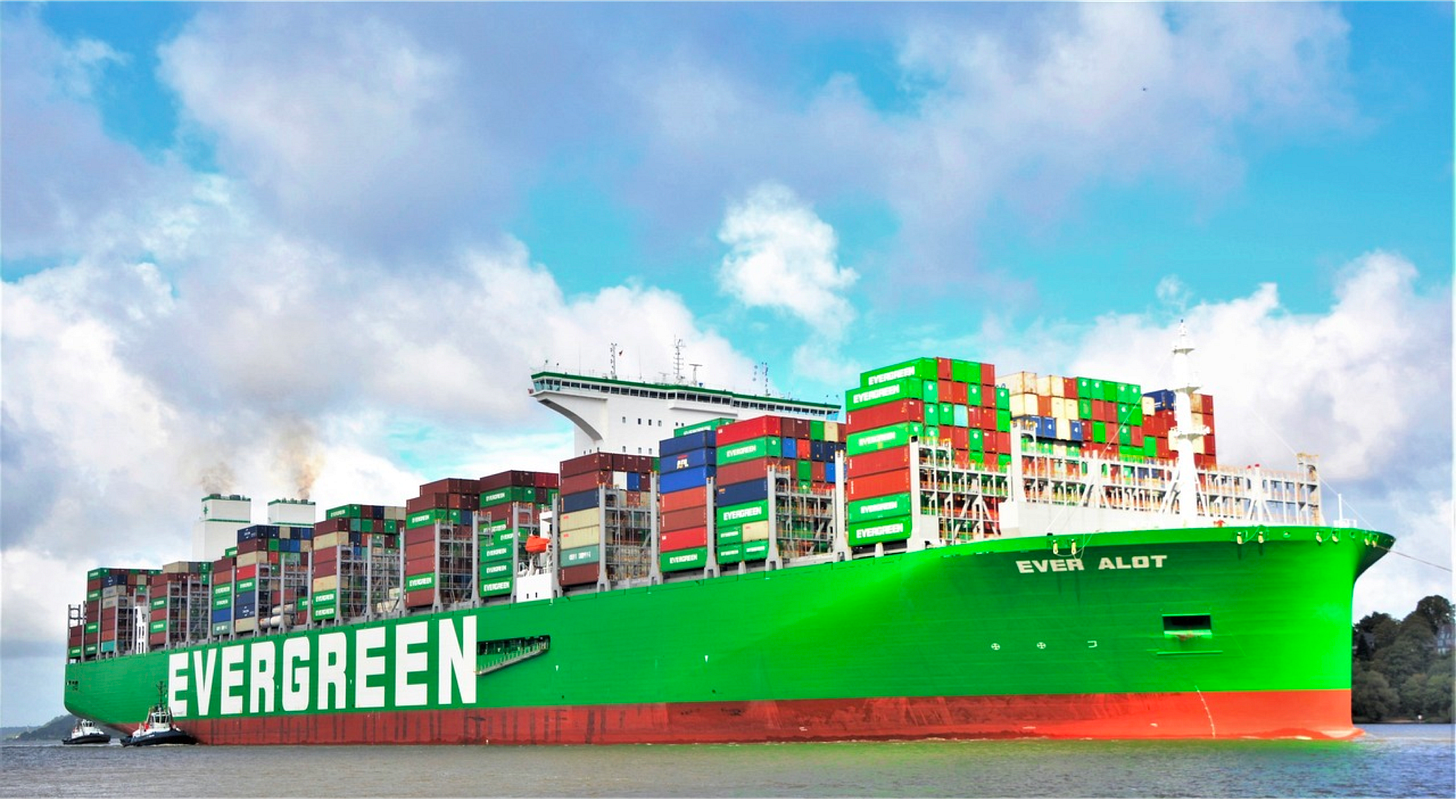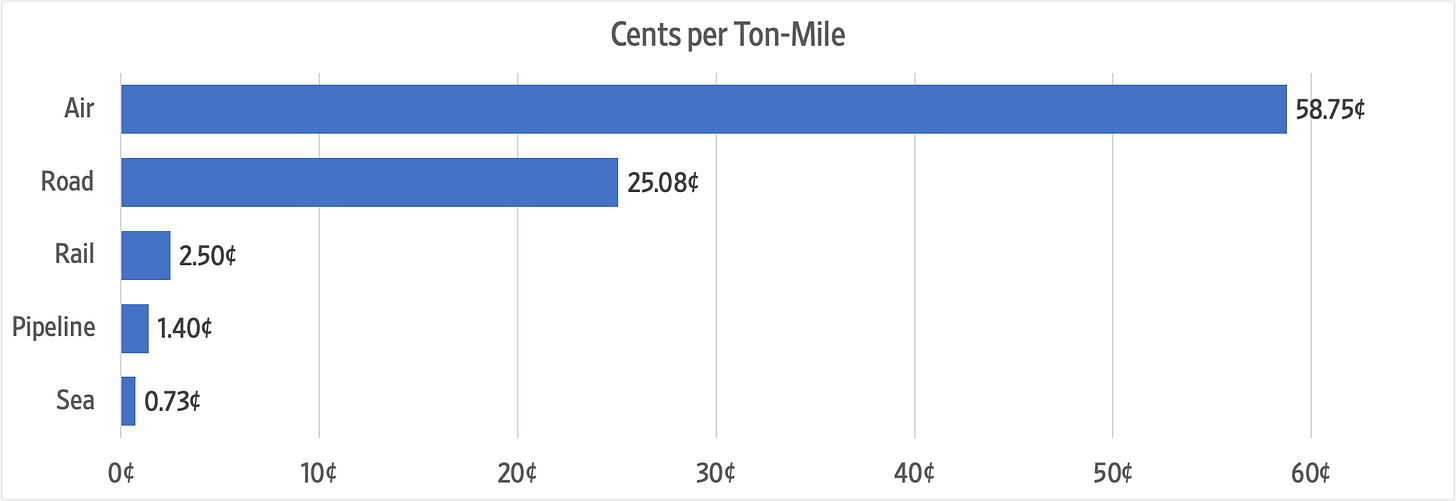Ever More Thinking About Shipping
The Ever Alot is like a 91-mile long train. It can move one ton a mile for less than a penny.
Evergreen’s Ever Alot is currently the world’s largest container cargo ship. It measures 1,312 feet by 203 feet and holds up to 24,004 twenty-foot equivalent units (TEU). If these containers were placed end-to-end they would stretch for almost 91 miles. When Malcolm McLean began innovating containerization in 1956 his first ship held 58 containers. Ship capacity has grown at a compound annual rate of 9.5 percent, doubling every 7.6 years.
The Taiwan-based Evergreen Marine Corporation was established in 1968 by Yung-Fa Chang (1927-2016) with one secondhand, 20-year old cargo vessel named the Central Trust to provide "go-anywhere" service. Evergreen now has a fleet of over 160 container vessels. Chang was the son of a ship's carpenter and worked his way up from a lowly shipping clerk, to sailor, and eventually to captain of a ship. Chang started Evergreen with 50 employees, 32 of whom worked at sea. The Evergreen Group now has over 27,000 employees and more than 220 offices worldwide, and now comprises about 30 major corporations worldwide.
Things can be shipped five ways: roads, rail, sea, air, and pipelines. Professor Ronald Ballou estimated the following rates per ton-mile:
For the cost of shipping one ton by air, you can ship over 80 tons by ship. Shipping by air from Shanghai to Los Angeles takes around 12 hours while container ships take 13 days. Ships take 26 times longer but are 98.75 percent cheaper. Entrepreneurs, like Yung-Fa Chang and millions of others, with the freedom to innovate and share their creativity in free markets give us lots of great choices and tradeoffs.
Tip of the Hat: Scott Campbell @CptYankeeJock
You can learn more about these economic facts and ideas in our new book, Superabundance, available at Amazon. Jordan Peterson calls it a “profoundly optimistic book.”
Gale Pooley is a Senior Fellow at the Discovery Institute and a board member at Human Progress.








Fascinating differences in pricing. Presumably the cost for shipping by sea has come down a lot in the last 50 years with the growth in ship size?